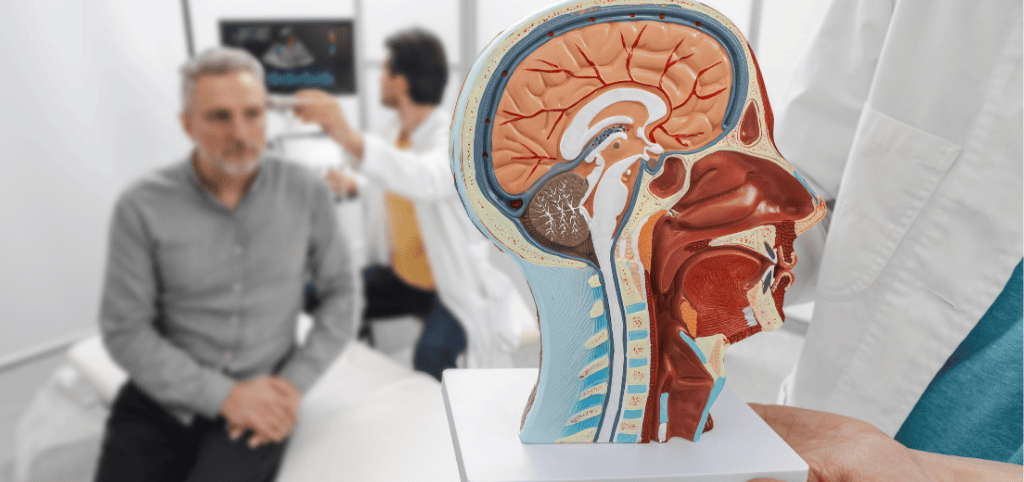Vagus Nerve: Our body is an intricate network of systems, with the vagus nerve being fundamental to numerous essential functions. Often overlooked, this cranial nerve enables constant communication between various organs and the brain, thereby modulating aspects such as digestive activity, heart rate, mood and stress reactions.
The vagus nerve, the longest cranial nerve, originates in your brainstem and extends all the way down to your large intestine. It’s truly a “wandering” nerve, influencing the heart, lungs, and digestive system along its path.
The vagus nerve is a key player in your autonomic nervous system, the control center for involuntary bodily functions. It’s responsible for helping your body navigate between the “fight-or-flight” response, which prepares you for immediate action, and the “rest-and-digest” (parasympathetic) mode, promoting relaxation and healing.
However, factors like chronic stress can lead to vagal dysfunction, where the nerve struggles to effectively switch you back to that crucial relaxed state. Click here for easy online bookings for your benefit
While medical procedures like Vagus Nerve Stimulation (VNS) exist for specific conditions, the good news is that you can empower your vagus nerve naturally through simple, at-home techniques. These methods work by indirectly stimulating the nerve, sending calming signals throughout your body and promoting a more balanced nervous system.
Here are some accessible techniques you can try to enhance your vagal tone and foster overall well-being:
1. Conscious Breathing: Your breath is a powerful tool for vagal stimulation. The vagus nerve is closely linked to your diaphragm and lungs. By slowing down your breathing and focusing on deep, belly breaths, you can signal your nervous system to relax. The 4-7-8 breathing method is a simple yet powerful tool for promoting relaxation and aiding sleep. This method can be performed in various positions, though an upright seated posture is often recommended for general practice. If your goal is to drift off to sleep, you can comfortably do it while lying down.
Here’s a step-by-step guide to practicing this calming breath:
• Tongue Placement: Throughout the entire exercise, the tip of your tongue should rest gently against the tissue behind your upper front teeth, maintaining contact with the roof of your mouth.
• Inhale for Four Counts: With your mouth closed, quietly inhale through your nose for four counts. Maintain a steady, comfortable pace – not too fast, not too slow.
• Hold Your Breath for Seven Counts: Without tension or strain, hold your breath for seven counts. It’s crucial to do this gently, without forcing or holding your breath to the point of discomfort.
• Exhale for Eight Counts: Slowly release your breath through your mouth, creating a gentle “whooshing” sound, as you exhale over a count of eight.
This completes one full cycle of the 4-7-8 breathing technique. To maximize the benefits, aim to complete three full cycles of this breathing exercise, practicing it twice daily. Consistent practice can help you harness its calming effects for stress reduction and improved sleep quality.
2. Humming and Singing: The vagus nerve passes by your vocal cords and inner ear. The vibrations created by humming or singing can directly stimulate this nerve. Pick your favorite tune, hum a simple melody. Notice the gentle vibrations in your chest, throat, and head as you do so.
3. Cold Water Immersion (Face Splash): This simple yet effective technique can activate what’s known as the “diving reflex.” Splashing cold water on your face, particularly from your lips to your hairline, can instantly slow your heart rate and promote a sense of calm. You can also try holding ice cubes in a Ziploc bag against your face for a similar effect, coupled with a brief breath hold.
4. Valsalva Maneuver: This technique involves closing your mouth, pinching your nose, and attempting to breathe out. This increases pressure in your chest cavity, which in turn can stimulate the vagus nerve and enhance vagal tone.
5. Movement and Exercise: Regular physical activity, particularly interval and endurance training, can positively impact your vagus nerve activity and improve heart rate variability, a key indicator of vagal tone. Exercise helps to lower your sympathetic nervous system activity, promoting a better balance within your cardiovascular and respiratory functions.
6. Laughter: Beyond lifting your mood, a good laugh can also stimulate your vagus nerve. Embrace opportunities for genuine laughter in your daily life.
These at-home techniques offer accessible and natural ways to support your vagus nerve, helping you shift from a state of stress to one of relaxation. By incorporating them into your routine, you can empower your body’s natural ability to de-stress, manage discomfort, and enhance your overall well-being. Remember, consistent practice is key to nurturing your vagus nerve and unlocking its profound benefits for your physical and mental health.
Always consult with your healthcare provider before trying new strategies, especially if you suspect to be suffering from or have underlying health conditions.
Top 5 Benefits of Stimulating the Vagus Nerve Naturally
Reduces Stress and Anxiety
Activating the vagus nerve helps shift the body into a parasympathetic (rest-and-digest) state, significantly reducing stress and promoting emotional calm.
Improves Digestion
Vagal stimulation supports optimal digestive function by enhancing communication between the brain and digestive organs, reducing symptoms like bloating and constipation.
Enhances Heart Health
A strong vagal tone is associated with improved heart rate variability, which supports better cardiovascular health and resilience to stress.
Boosts Immune Function
By promoting balance in the autonomic nervous system, stimulating the vagus nerve can help regulate inflammation and strengthen immune response.
Improves Sleep Quality
Techniques like the 4-7-8 breathing method help calm the nervous system, making it easier to fall asleep and stay asleep through the night.
Top 5 Frequently Asked Questions about the Vagus Nerve
What is the vagus nerve and what does it control?
The vagus nerve is the longest cranial nerve and plays a vital role in regulating heart rate, digestion, respiratory rate, and the body’s stress response.
How can I naturally stimulate my vagus nerve at home?
You can stimulate it using methods like deep breathing (especially the 4-7-8 technique), humming or singing, cold face splashes, exercise, and laughter.
Can vagus nerve stimulation really help with anxiety or panic attacks?
Yes, improving vagal tone helps the body switch from “fight-or-flight” to “rest-and-digest,” which can calm anxiety and lower panic response.
How often should I practice these techniques?
For best results, aim to incorporate one or more techniques (like deep breathing or humming) into your daily routine, even just for a few minutes.
Are there risks to vagus nerve stimulation?
Natural stimulation methods are generally safe, but always consult your healthcare provider if you have underlying health conditions before starting a new regimen.








